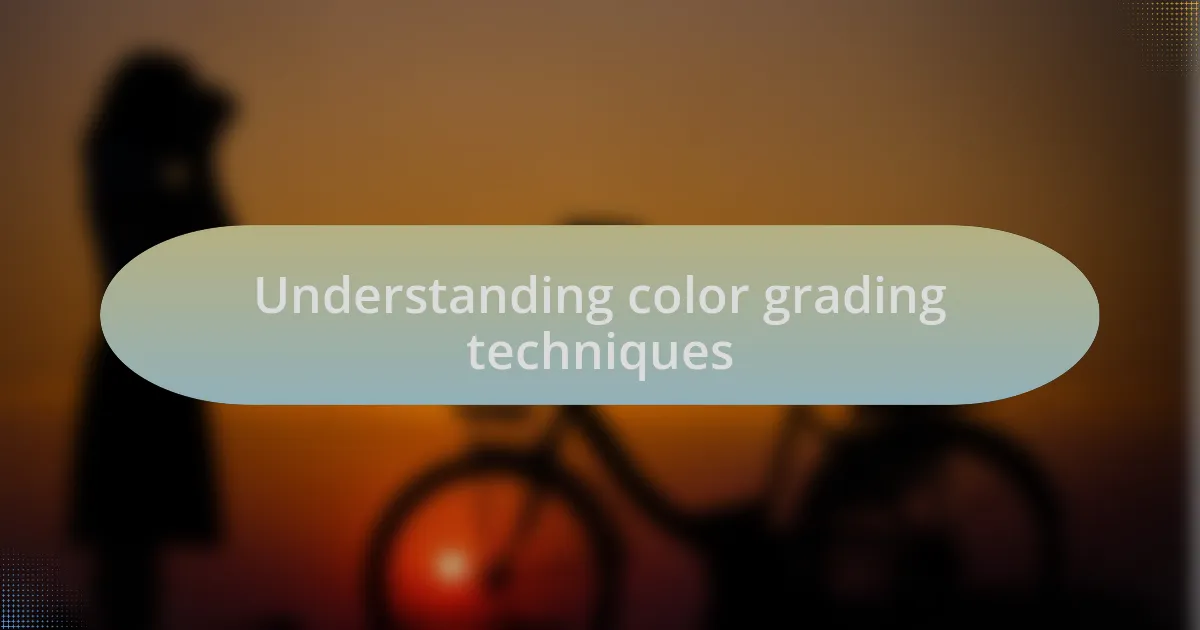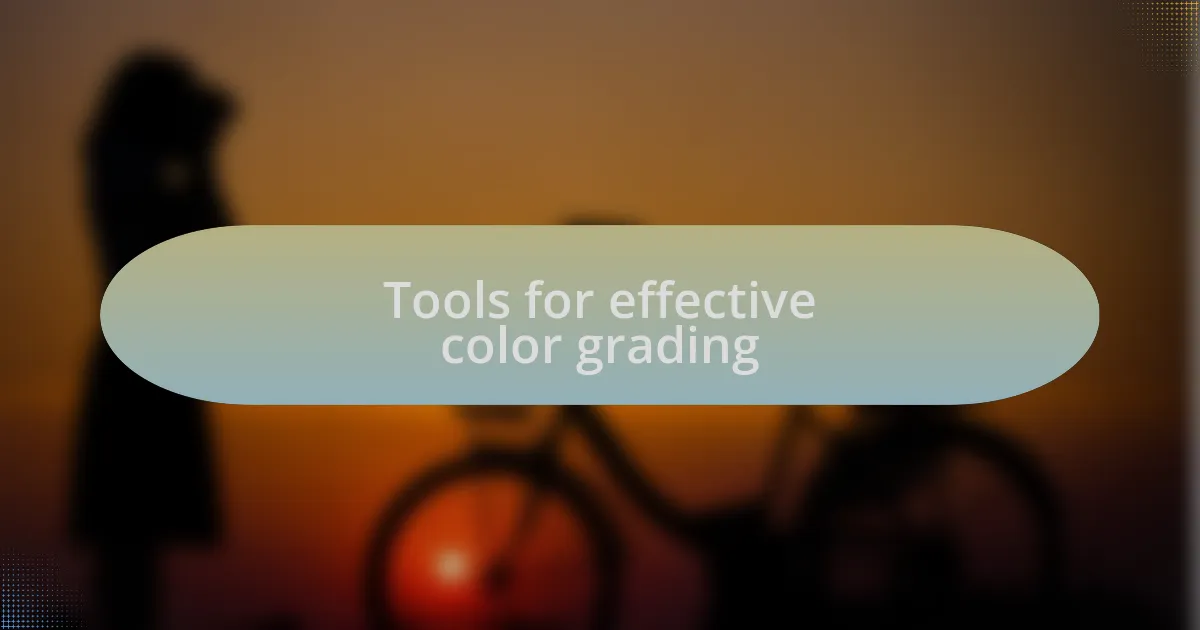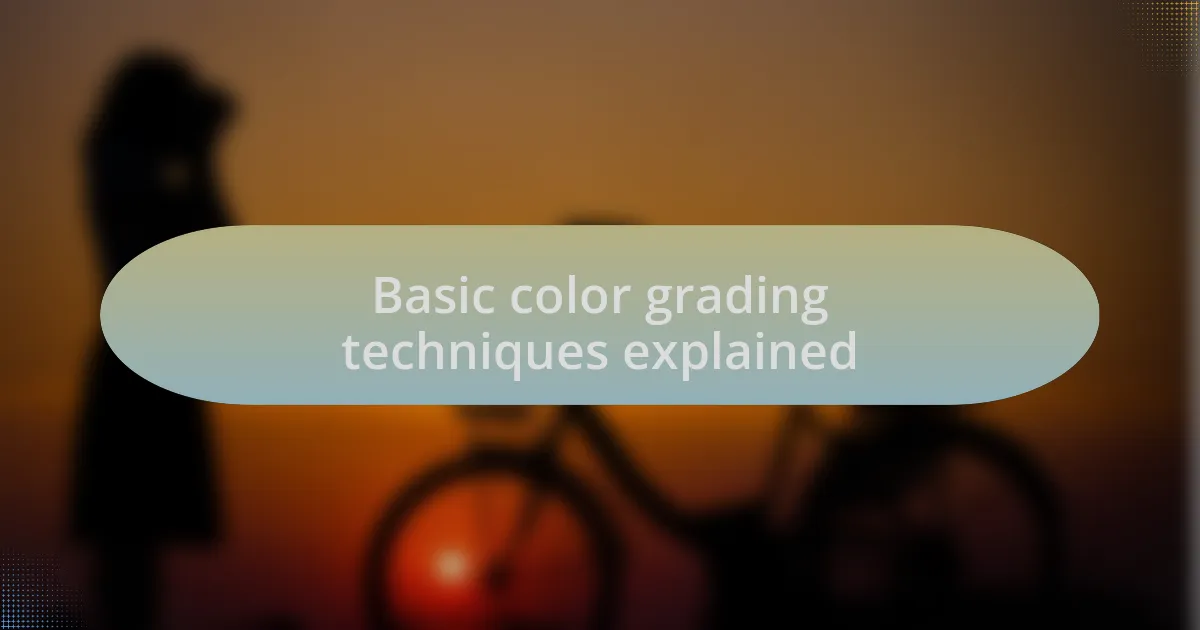Key takeaways:
- Color grading enhances the narrative of photos by evoking emotions through hue adjustments, with warm tones inviting connection and cooler hues fostering distance.
- Essential tools for effective color grading include user-friendly software like Adobe Lightroom and DaVinci Resolve, and a color-calibrated monitor for accurate editing.
- Basic techniques involve understanding hue, saturation, and brightness, along with the use of color curves and LUTs to create desired moods and enhance visual storytelling.

Understanding color grading techniques
Understanding color grading techniques is like unlocking a new dimension of your photos. I remember the first time I softened the shadows in an image; it felt as though I had breathed new life into the scene. Isn’t it fascinating how adjusting a few settings can evoke entirely different emotions?
Color grading isn’t just about making your images look good; it’s about telling a story. For me, shifting the hues can transform a vibrant sunset into a moody, contemplative moment. Do you ever wonder how a specific color palette can convey sadness or joy? Personally, I find that warm tones often draw the viewer in, making them feel embraced, while cooler hues create distance and contemplation.
One technique I often employ is the use of complementary colors to create a striking contrast. I recall editing a portrait where I shifted the background to a soft teal while keeping the subject warm-toned. How incredible it is that this simple adjustment made the subject pop, drawing a viewer’s eye straight to their expression! Understanding these techniques allows us to manipulate the viewer’s perception, ultimately enhancing the narrative we want to convey through our photography.

Tools for effective color grading
To effectively color grade your images, it’s essential to have the right tools. I’ve found software like Adobe Lightroom and DaVinci Resolve to be incredibly powerful for precise color manipulation. The user-friendly interfaces combined with advanced features allow me to experiment with color wheels, curves, and LUTs (Look-Up Tables) without feeling overwhelmed. Have you ever felt lost in a complex editing program? Starting with these tools minimized my learning curve and made the process enjoyable.
Another indispensable tool is a good monitor calibrated for color accuracy. I remember the first time I edited an image on an uncalibrated screen, only to discover later that the colors looked vastly different on my laptop than on my phone. It was frustrating! Ensuring my monitor displays true colors has helped me make more informed decisions during the grading process. Isn’t it amazing how much clarity and consistency can impact the final output?
Apart from software and monitors, I often rely on color palettes and reference images to guide my grading sessions. For instance, when working on a project inspired by classic movies, I gather stills that resonate with the mood I want to capture. This approach not only ignites my creativity but also acts as a benchmark for the emotional tone I aim to achieve. How do you gather inspiration for your edits? I find that surrounding myself with visual references can significantly enhance my color grading precision.

Basic color grading techniques explained
Color grading begins with understanding the basics of hue, saturation, and brightness. I remember the first time I adjusted these parameters on a photo; it was like unveiling a hidden masterpiece. Increasing saturation made colors pop, while adjusting brightness helped me fine-tune the mood. Have you ever noticed how a subtle tweak can entirely transform an image?
One technique that has greatly enhanced my workflow is the use of color curves. I often find myself adjusting the RGB curves to create a more dynamic range, especially when working with shadows and highlights. It’s fascinating how a slight lift in the shadows can give an image a dreamy quality. Have you experimented with curves? Discovering how they can manipulate the tonal range was a game-changer for me.
Lastly, using LUTs can be an exciting way to apply a specific look to your images. I like to think of LUTs as a shortcut to achieving a certain mood or style, often inspired by cinematic themes. The first time I applied a vintage film LUT to my travel photos, it felt like I had transported them back in time. What styles resonate with you? Exploring different LUTs can lead to unexpected creative breakthroughs.